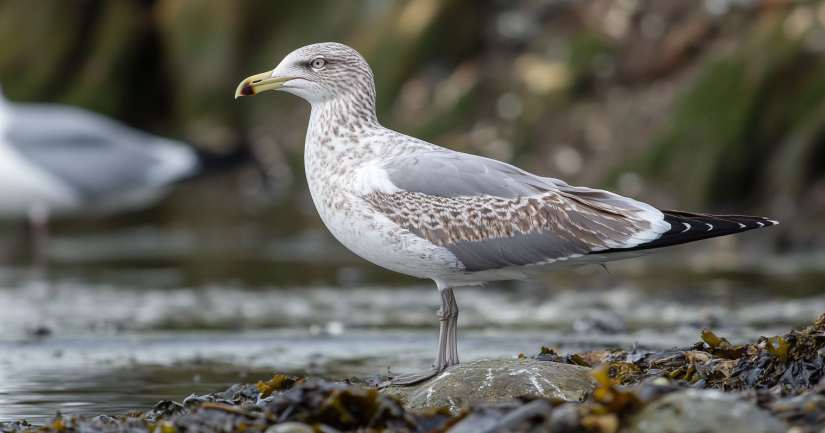
Are you ready to dive into the fascinating world of Seagull Quiz. How Much Do You Know About These Coastal Birds?. Seagulls are intelligent, adaptable, and often misunderstood. This Seagull Quiz will test your knowledge of these resourceful birds, found along coastlines, lakes, and even cities. Known for their sharp problem-solving skills and loud calls, seagulls play an essential role in marine ecosystems. Despite their reputation as scavengers, they are skilled hunters and strong fliers.
Seagulls belong to the Laridae family, which includes over 50 species worldwide. While most people associate them with beaches, some species thrive in inland environments. The Herring Gull, for example, often nests on rooftops in urban areas.
Seagulls are fascinating, but the robin’s charm awaits in the Robin Quiz, or you could explore the mystical world of the Raven Quiz.
Your Seagull Quiz Starts Here – Are You Ready?
What Makes Seagulls Unique? Key Insights for the Seagull Quiz
One of their most impressive traits is their intelligence. Seagulls use tools, drop shellfish from great heights to crack them open, and even mimic rainfall to trick worms into surfacing. Their ability to learn and adapt makes them one of the most successful bird species.
Where Do Seagulls Live? Understanding Their Habitat and Behavior
Seagulls prefer coastal regions, lakes, and estuaries, but many species have adapted to human environments. They are opportunistic feeders, meaning they eat fish, insects, small animals, and human scraps. Their diet and habitat flexibility allow them to thrive in diverse conditions.
These birds are also strong, efficient fliers, capable of soaring long distances. Some species migrate thousands of miles between breeding and wintering grounds. The Sabine’s Gull, for instance, travels between the Arctic and the tropics each year.
How Do Seagulls Communicate and Raise Their Young?
Seagulls are highly social birds with a complex system of calls and body signals. They use different vocalizations to warn of danger, establish territory, and communicate within their flock. Their loud cries, often heard at beaches and harbors, help maintain order in large colonies.
During breeding season, seagulls form monogamous pairs, returning to the same nesting sites each year. Both parents take turns incubating eggs and feeding chicks, ensuring the survival of their young. Their protective instincts are strong, often leading to aggressive defense tactics against intruders.
Are Seagulls in Danger? Conservation and Challenges
Seagulls are adaptable, but some populations face declines due to habitat loss, pollution, and climate change. Rising sea levels and overfishing reduce their food sources, forcing them to rely more on human environments.
To help protect seagulls, conservationists encourage:
- Reducing plastic waste to prevent ocean pollution
- Protecting coastal habitats where they nest and forage
- Supporting sustainable fishing to maintain healthy fish populations
These actions help ensure seagulls continue to thrive in their natural environments.
Are You Ready to Take the Seagull Quiz?
Now that you’ve learned about seagulls’ intelligence, habitats, and survival strategies, it’s time to test your knowledge! This Seagull Quiz will challenge you with fun and fascinating questions about these adaptable birds. See how much you know—start the quiz now!
Check out our FULL collection of Bird Quizzes!
Seagull – FAQ
Seagulls are a diverse group of seabirds belonging to the family Laridae. They are commonly found near coastal regions, lakes, and rivers, where they thrive in habitats rich in food sources. Their adaptability allows them to inhabit urban areas as well, often seen scavenging in parks and parking lots.
Seagulls have a varied diet, primarily consisting of fish, crustaceans, and other marine organisms. However, they are opportunistic feeders and will also consume insects, small mammals, and human food scraps. This dietary flexibility plays a significant role in their survival and reproduction.
Seagulls utilize a range of vocalizations and body language to communicate. Their calls can vary in pitch and intensity, serving different purposes such as warning of danger, attracting mates, or signaling to their young. Additionally, they may use physical displays, like wing flapping and posturing, to convey messages.
Many seagull species are indeed migratory, traveling considerable distances between breeding and wintering grounds. Migration patterns can vary significantly depending on the species, with some seagulls moving south to warmer climates for the winter, while others may remain year-round in their habitats.
A prevalent misconception is that all seagulls are pests. While it’s true that they can be aggressive scavengers, especially in urban areas, they play a crucial ecological role as scavengers in their environments. Additionally, not all seagull species are found near the sea; some inhabit inland regions. Understanding their behavior and ecological importance can foster a greater appreciation for these birds.
